ViewSonic VP2771 Professional Monitor Review
Why you can trust Tom's Hardware
Gamma Response
We found a number of different gamma interpretations in the VP2771’s various modes. Native looks pretty good out of the box with just two slight dips at 10 and 90%. They are invisible to the naked eye. Rec.709 looks a little dark, but it also has a familiar appearance. Could it perhaps be BT.1886? Our recalculated chart says yes! Very few monitors conform to BT.1886, which is becoming more common in video post-production. Some HDTVs support it, but most computer monitors still aim for the 2.2 power function for maximum compatibility with content both new and old. Our only complaint here is that ViewSonic doesn’t simply offer a labeled preset in the OSD.
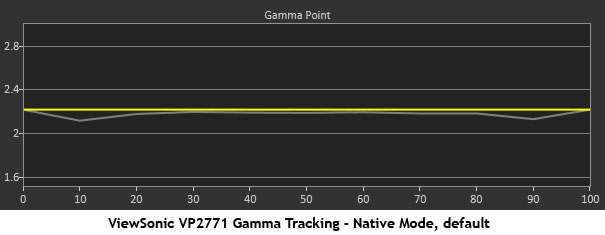
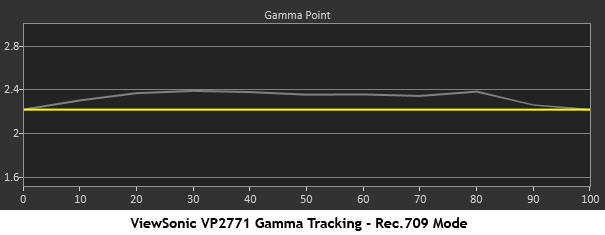
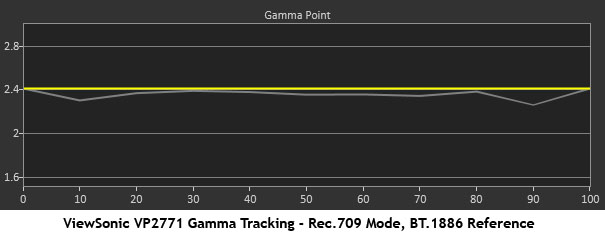
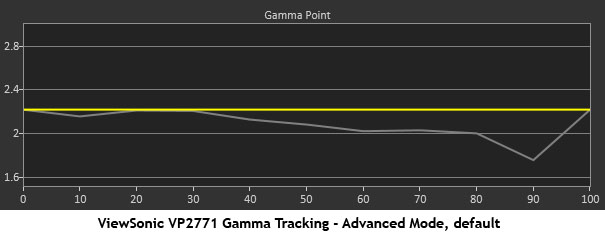
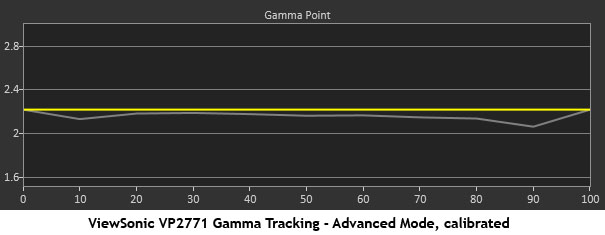
In the Advanced Mode, you’ll need to perform a calibration to get the gamma tracking right. Otherwise, the image starts to wash out as it gets brighter. Selecting the 2.2 preset along with RGB adjustments gets the line pretty close to 2.2. The same dips occur at 10 and 90% and the entire line rides just below the standard. But visually, there are no issues to speak of.
Comparisons
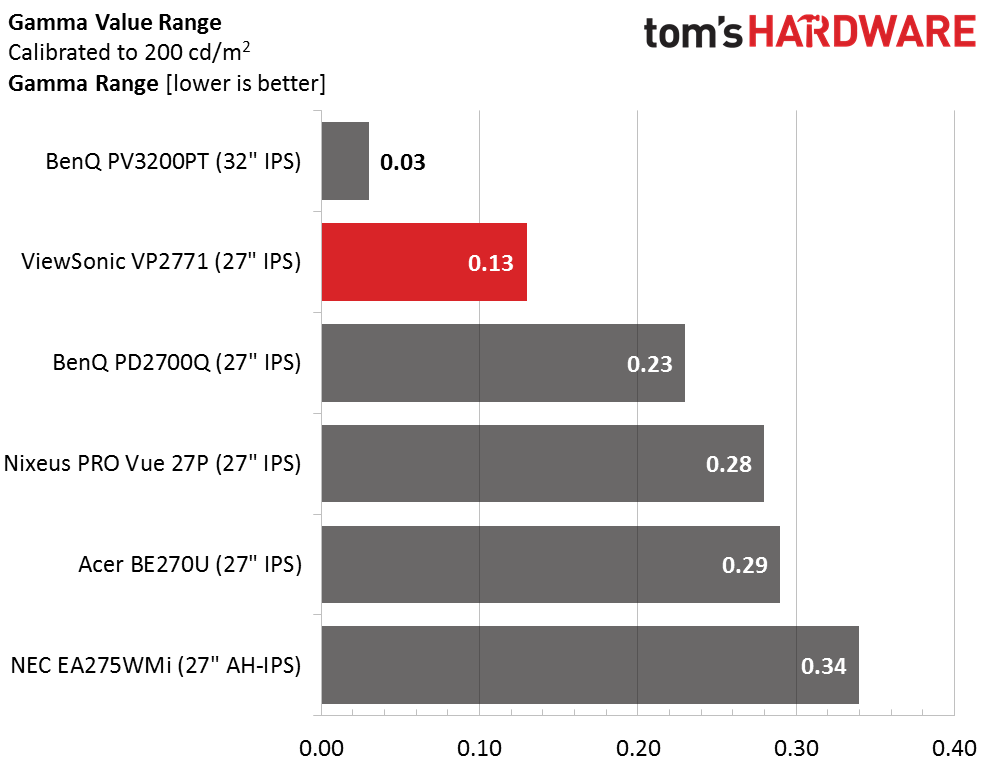
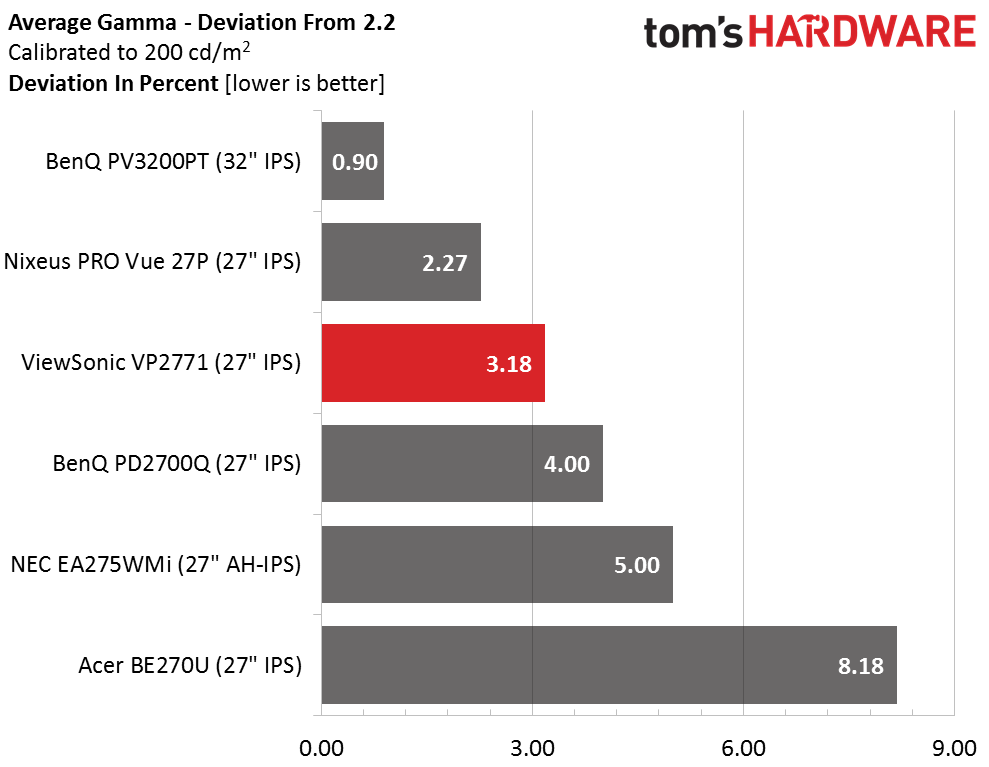
The comparison charts represent our manually calibrated values. This is about the best the VP2771 can do, which is solid. The range of values is fairly tight, and an average of 2.13 puts the deviation at 3.18% off the mark. It’s a small error to be sure; not enough to harm the color tracking results which we’ll get to now.
MORE: Best Gaming Monitors
MORE: Best Professional Monitors
MORE: How We Test Monitors
MORE: How To Choose A Monitor
Get Tom's Hardware's best news and in-depth reviews, straight to your inbox.
MORE: All Monitor Content

Christian Eberle is a Contributing Editor for Tom's Hardware US. He's a veteran reviewer of A/V equipment, specializing in monitors. Christian began his obsession with tech when he built his first PC in 1991, a 286 running DOS 3.0 at a blazing 12MHz. In 2006, he undertook training from the Imaging Science Foundation in video calibration and testing and thus started a passion for precise imaging that persists to this day. He is also a professional musician with a degree from the New England Conservatory as a classical bassoonist which he used to good effect as a performer with the West Point Army Band from 1987 to 2013. He enjoys watching movies and listening to high-end audio in his custom-built home theater and can be seen riding trails near his home on a race-ready ICE VTX recumbent trike. Christian enjoys the endless summer in Florida where he lives with his wife and Chihuahua and plays with orchestras around the state.
-
milkod2001 Enjoying my $300 Qnix 1440p monitor for last 3years. Now i see the same specs monitor maybe slightly better colours out of the box for $499... NO Quantum Dot, tech, NO HDR, No Qsync/Free Sync2 nothing. NO sale for me, sorry.Reply